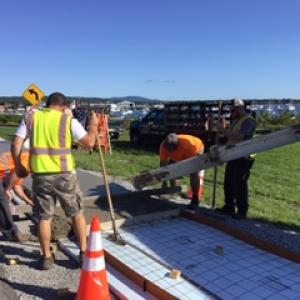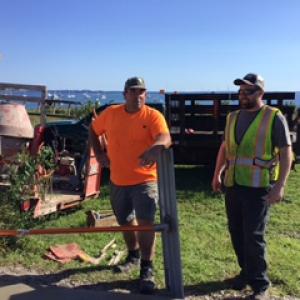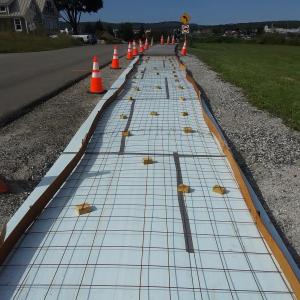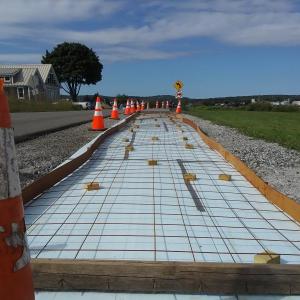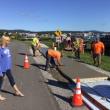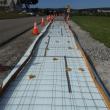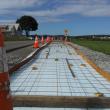With lessons learned, Rockland crew looks forward to spring for walkway construction
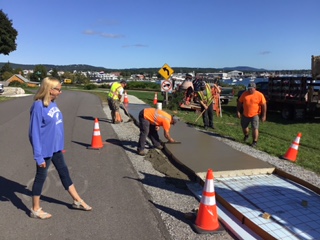 In September 2021, City Council and Harbor Trail Committee member Louise MacLellan-Ruf watches as Public Works employees build a section of stamped concrete. L to R: Josh Bodman, Damen Henderson, Ryan Fisher and Chris Donlin. (Courtesy photo)
In September 2021, City Council and Harbor Trail Committee member Louise MacLellan-Ruf watches as Public Works employees build a section of stamped concrete. L to R: Josh Bodman, Damen Henderson, Ryan Fisher and Chris Donlin. (Courtesy photo)
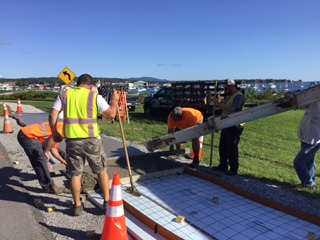 (Courtesy photo)
(Courtesy photo)
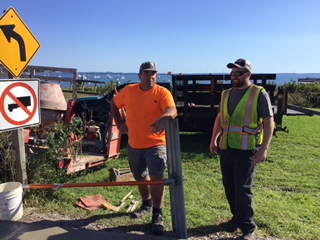 (Courtesy photo)
(Courtesy photo)
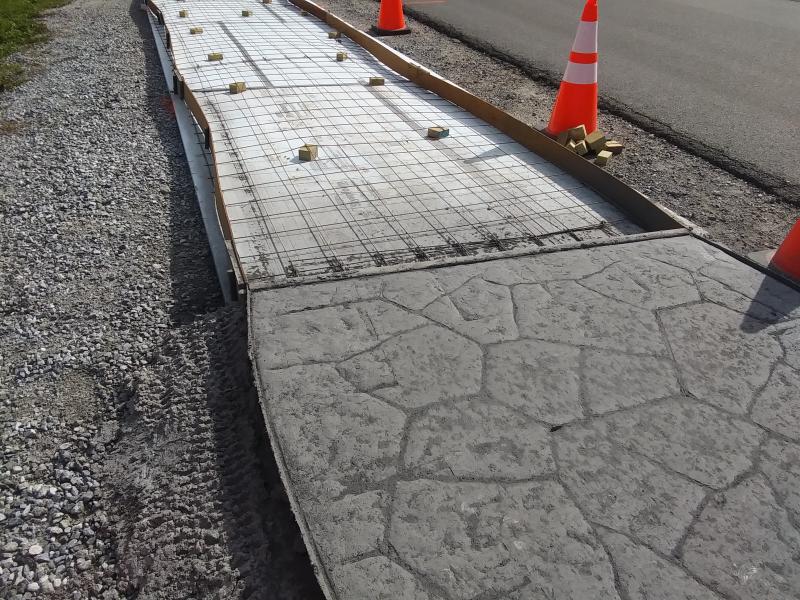 (Photo by Sarah Thompson)
(Photo by Sarah Thompson)
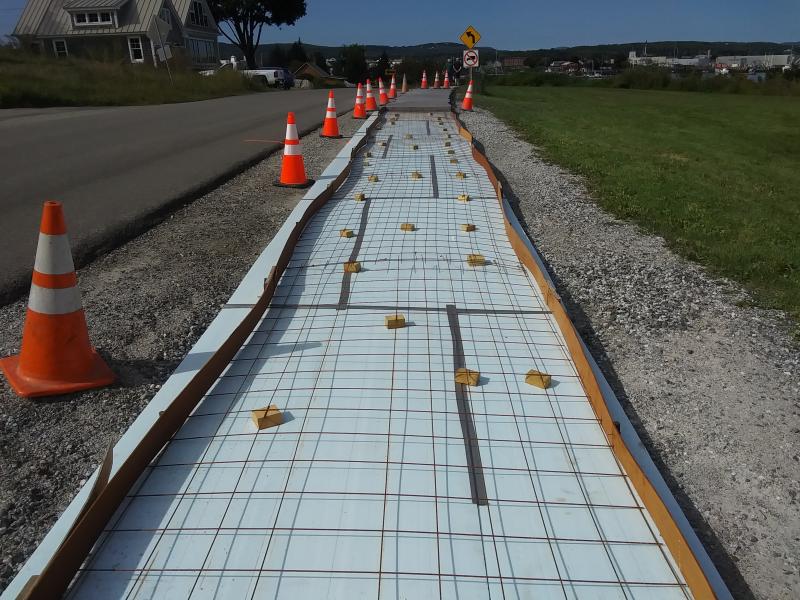 (Photo by Sarah Thompson)
(Photo by Sarah Thompson)
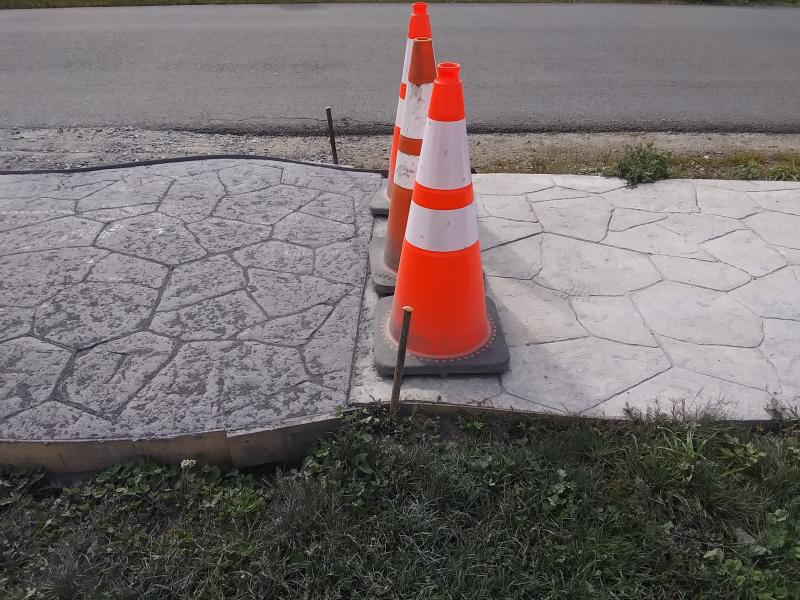 Not just a standard sidewalk, the quirky changes in pattern bring intrigue to a daily walk. (Photo by Sarah Thompson)
Not just a standard sidewalk, the quirky changes in pattern bring intrigue to a daily walk. (Photo by Sarah Thompson)
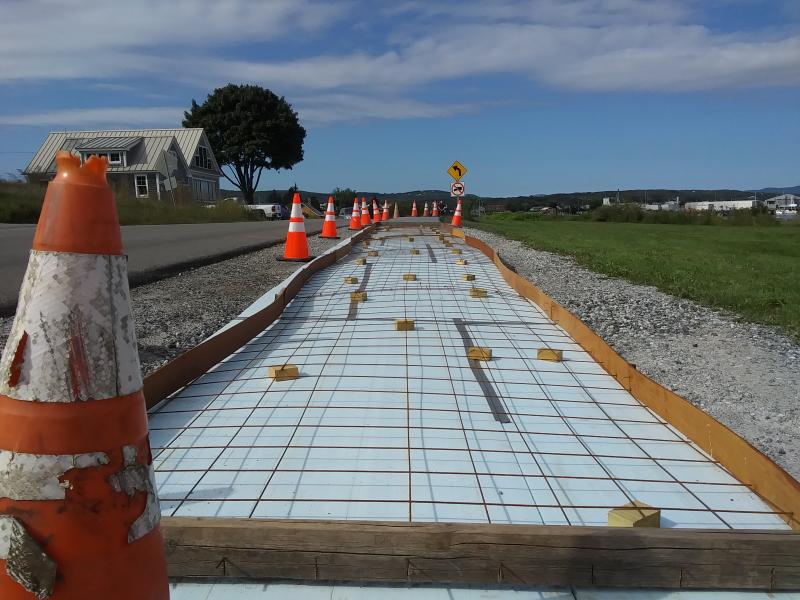 (Photo by Sarah Thompson)
(Photo by Sarah Thompson)
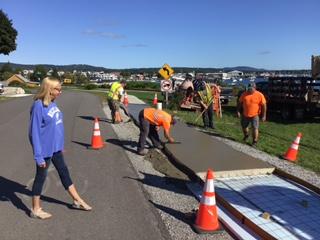 In September 2021, City Council and Harbor Trail Committee member Louise MacLellan-Ruf watches as Public Works employees build a section of stamped concrete. L to R: Josh Bodman, Damen Henderson, Ryan Fisher and Chris Donlin. (Courtesy photo)
In September 2021, City Council and Harbor Trail Committee member Louise MacLellan-Ruf watches as Public Works employees build a section of stamped concrete. L to R: Josh Bodman, Damen Henderson, Ryan Fisher and Chris Donlin. (Courtesy photo)
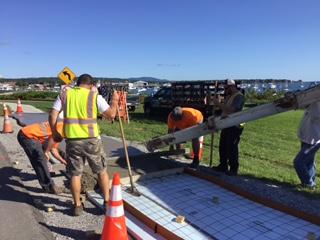 (Courtesy photo)
(Courtesy photo)
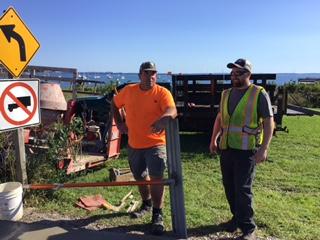 (Courtesy photo)
(Courtesy photo)
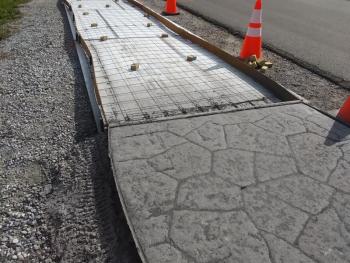 (Photo by Sarah Thompson)
(Photo by Sarah Thompson)
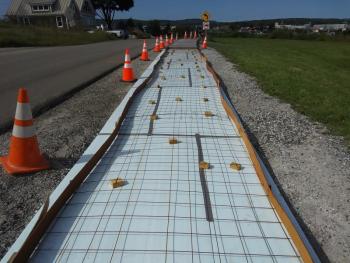 (Photo by Sarah Thompson)
(Photo by Sarah Thompson)
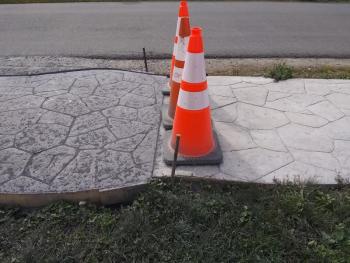 Not just a standard sidewalk, the quirky changes in pattern bring intrigue to a daily walk. (Photo by Sarah Thompson)
Not just a standard sidewalk, the quirky changes in pattern bring intrigue to a daily walk. (Photo by Sarah Thompson)
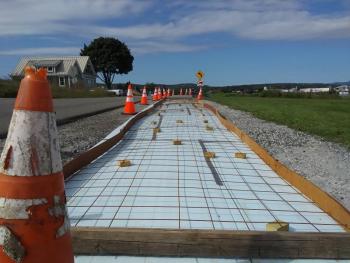 (Photo by Sarah Thompson)
(Photo by Sarah Thompson)
ROCKLAND – Rockland Public Works is rolling out a novel form of pavement along Atlantic Street as part of the Harbor Trail’s continuous extension, and although only a third of the way done, and on break for the winter, the five-person pathway crew has been increasingly perfecting its new skillset along with each new completed section.
Four years ago, the Rockland Harbor Trail Committee vetoed the idea of installing a gravel walkway between Crescent and Mechanic streets. Public Works shared a reluctance for using time-consuming brick pavers, yet wanted to keep the project in-house. With those exemptions in mind, and in a sort-of “back of the napkin” fashion, now-interim Public Works Director Chris Donlin suggested stamped concrete.
For Rockland, the process includes forming and seating cement into 40-foot long by five-foot wide sections separated by Styrofoam sill seal and placing everything on top of two inches of blue board.
Rockland already owned the earth moving equipment. The city only needed to purchase the stamp, trimming tools, sealers and hardeners, and to bring in a commercial supplier to demonstrate the method.
“We’re not paying top dollars – especially nowadays with the economy the way it is – to get a contractor in,” said Donlin. “And we’re not out doing it every day [as a routine Public Works duty], so those stamps are going to last us a lot longer than it would a commercial outfit.”
The other benefit: The crew can be a part of the project.
The five public works crew members who work on the project each time around are fully committed to the project, from forming the sections to completing the installation. As they grow new skills, the crew members have also developed a sense of pride of the new pathway.
“They really put their heart and soul into this,” said Donlin.
They are learning as they go. And learning some more. Surrender to the rain became a forced practice, and not just on the storm days themselves.
“The rain after the fact is our worst enemy,” said Donlin. “During and after the fact. It has to be above 40 degrees, and precipitation-free the day you are doing it, and for at least a day or two after.”
Like all pavement surfaces, the path will require upkeep and replacement, said Donlin. There’s no guarantee.
“It’s just concrete and Maine weather and the salt and the sun and the wind,” he said. “It’s new for a day, and then it starts breaking down.”
That’s where working by sections comes in handy. In the future, when the crew decides that a specific area needs redoing, they can refrain from digging up the entire project. Instead, they’ll zero in on the 40-foot section around the damaged site.
This coming spring, as weather conditions allow, the crew will return to finish what they’ve started, and they’re excited, according to Donlin.
“I’m not the one doing it,” he said. “The guys do it. It might have been my idea four years ago. But if the guys hadn’t bought into it, and the guys hadn’t given the investment that they’ve given to it, this wouldn’t be happening.”
Public Works employees who’ve contributed to this project are: Josh Bodman, Damen Henderson, Ryan Fisher, Frank Kurr, Arthur Hutchinson, Jimmy Oldroyd, John Nelson, and Chris Donlin.


